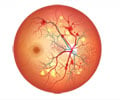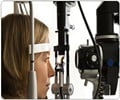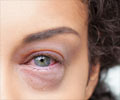
In one phase, the dots moved around randomly; in the other, some of the dots moved together from right to left. In both phases, the dots were accompanied by sound.
Participants were divided into three groups. One group heard sound moving from right to left as the dots moved from right to left, and they heard sound that remained stationary during the random phase.
A second group heard the right-to-left sound during both phases. And a third group heard sound moving in the opposite direction - from left to right - during both phases. Then, each participant experienced trials in all three conditions.
As Shams expected, the participants were best able to identify the phase in which the dots moved horizontally when the sound moved in the same direction as the dots but remained stationary during the random phase.
The researchers found that the sound that moved in the opposite direction neither enhanced nor worsened the participants' visual perception.
Advertisement
"This study shows that at least in regards to perception of moving objects, hearing and sight are deeply intertwined, to the degree that even when sound is completely irrelevant to the task, it still influences the way we see the world," said Shams, senior author of the study.
Advertisement
Source-ANI










